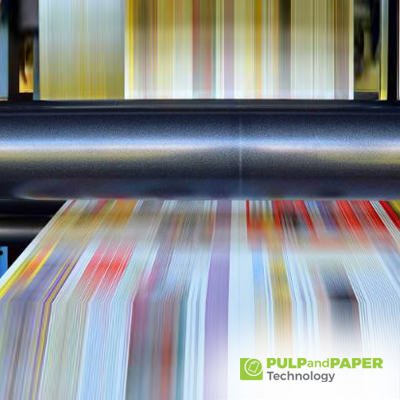Innovations in Printing Lines for the Pulp and Paper Industry

The pulp and paper industry has undergone significant transformations in recent years, driven by technological advancements and the need for sustainable practices. One area that has seen remarkable innovation is printing lines, where cutting-edge technologies have revolutionized efficiency, quality, and environmental sustainability. In this article, we will explore the latest innovations in printing lines for the pulp and paper industry and their impact on production processes and product quality.
Introduction to Printing Lines in the Pulp and Paper Industry
Printing lines play a crucial role in the production of high-quality paper products, including newspapers, magazines, packaging materials, and specialty papers. These lines integrate printing processes into the paper production workflow, allowing for customization, branding, and enhanced visual appeal of the final products. Over the years, advancements in printing technologies have led to more efficient and versatile printing lines that meet the evolving demands of the market.
Digital Printing Technologies
Digital printing has emerged as a game-changer in the pulp and paper industry, offering several advantages over traditional analog printing methods. One of the key innovations in digital printing lines is the adoption of high-speed inkjet printing technology. Unlike traditional offset printing, which involves plates and rollers, inkjet printing enables direct printing onto paper surfaces, resulting in faster turnaround times and reduced waste.
Moreover, digital printing allows for variable data printing, enabling mass customization and personalized printing options. This is particularly beneficial for industries such as packaging, where unique codes, graphics, and designs can be incorporated into each printed item. Advanced digital printing lines also feature inline finishing capabilities, such as coating and embellishments, further enhancing the visual appeal of printed products.
Sustainable Printing Practices
Innovations in printing lines for the pulp and paper industry are also focused on sustainability and environmental responsibility. Manufacturers are increasingly adopting eco-friendly printing technologies that minimize waste, reduce energy consumption, and use bio-based or recycled materials. For instance, water-based inks and coatings are gaining popularity due to their lower environmental impact compared to solvent-based alternatives.
Additionally, advancements in waste management systems within printing lines help recycle and repurpose production by-products, further reducing the industry's ecological footprint. Sustainable printing practices not only align with regulatory requirements but also meet consumer preferences for eco-conscious products, driving market competitiveness and brand reputation.
Integration of Automation and Artificial Intelligence
Automation and artificial intelligence (AI) are revolutionizing printing lines in the pulp and paper industry, enhancing operational efficiency, quality control, and predictive maintenance. Modern printing lines feature integrated automation systems that optimize production workflows, minimize downtime, and ensure consistent print quality across batches.
AI-powered algorithms analyze production data in real-time, identifying potential issues such as color variations, print defects, or equipment malfunctions. This proactive approach enables operators to address issues swiftly, resulting in higher productivity and reduced waste. Furthermore, predictive maintenance algorithms predict equipment failures based on performance metrics, allowing for proactive maintenance scheduling and minimizing unplanned downtime.
Advanced Color Management Systems
Color accuracy and consistency are critical in the printing industry, especially for high-quality publications and packaging materials. Innovations in color management systems for printing lines have led to precise color matching, calibration, and profiling capabilities. Spectrophotometers and colorimeters integrated into printing lines measure color parameters accurately, ensuring that printed products meet the desired color standards.
Moreover, advanced color management software analyzes color data and adjusts printing parameters in real-time, compensating for environmental factors and substrate variations. This results in consistent color reproduction across different print runs, improving customer satisfaction and brand loyalty. Color management innovations also include the ability to simulate print outcomes digitally, allowing for pre-press color proofing and validation before full-scale production.
Enhanced Flexibility and Versatility
The demand for versatile printing solutions has driven innovations in printing lines that offer enhanced flexibility and customization options. Modular printing systems allow for quick changeovers between different print jobs, reducing downtime and increasing production efficiency. These systems support multiple printing processes, such as flexography, gravure, offset, and digital printing, providing manufacturers with a wide range of options to meet diverse market needs.
Furthermore, hybrid printing lines combine various printing technologies within a single production line, offering unparalleled flexibility and scalability. For example, a hybrid line may integrate digital inkjet printing for variable data and customization with offset or flexographic printing for high-volume production. This hybrid approach optimizes resource utilization, minimizes waste, and maximizes output without compromising on print quality or versatility.
Future Trends and Outlook
Looking ahead, the future of printing lines in the pulp and paper industry is poised for continued innovation and advancement. Key trends shaping the industry include:
- Advanced Materials: The development of specialty papers and functional coatings that enhance printability, durability, and eco-friendliness.
- 3D Printing: Exploration of additive manufacturing techniques for producing three-dimensional paper-based products and packaging solutions.
- Smart Printing Systems: Integration of Internet of Things (IoT) technologies for real-time monitoring, data analytics, and predictive maintenance in printing lines.
- Circular Economy Initiatives: Emphasis on closed-loop systems, recycling technologies, and sustainable practices throughout the printing value chain.
In conclusion, innovations in printing lines for the pulp and paper industry are driving significant improvements in efficiency, quality, and sustainability. Digital printing technologies, sustainable practices, automation, advanced color management, and flexibility are among the key factors shaping the future of printing lines. As manufacturers embrace these innovations, they can optimize production processes, meet market demands, and stay competitive in a rapidly evolving industry landscape.









